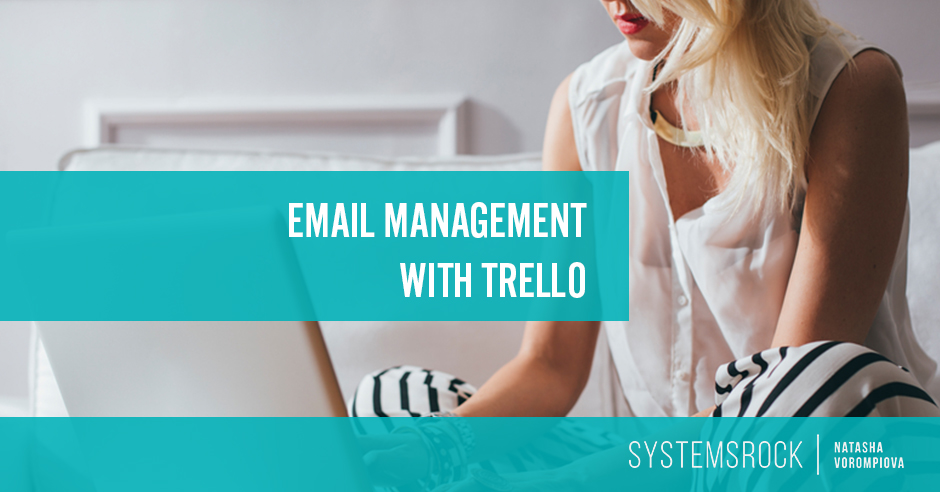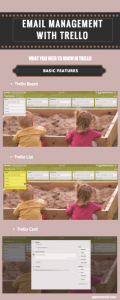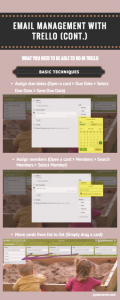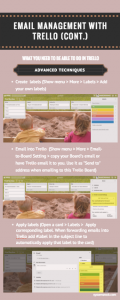Am I alone in this?
Has this ever happened to you? You come across a thread on Facebook where people rave about a task/project management tool:
- Ooh, it’s super easy to use and crazy effective;
- I no longer have to rewrite to-do lists or have them in 9 places;
- I use it to pretty much run my life;
- It’s been my go-to tool for client management;
- I’ve been using it for both business and personal tasks just to have everything in one place. It’s amazing!
New beginning
All that sounds heavenly. Excited, you create an account with that tool and start moving your tasks and projects there. For the next few days you diligently open your new tool and poke around to figure out how you can make it do the same wonders people talked about.
Unexpectedly, your good intentions get derailed by one client emergency after another. You no longer have time to learn your new tool, it’s easier to go back to not-so-efficient-but-familiar practices. So, you chalk it up to “this is not a tool for me,” “it’s not what I need,” and, maybe even, “I’m not an organized type” and stop using that tool completely.
Until one day you see a conversation about yet another tool that sounds like “the one” and decide to give it a try only to find yourself in the same situation as before. You feel disappointed with yourself and exhausted by this constant and never-ending quest for a tool that finally will work for you.
STOP beating yourself up!
Your ability to adopt a tool has little to do with how organized or determined you are. What really matters is where you are on the curve of learning that tool.
Take cooking, for example. You know that you can’t immediately go from not knowing how to boil an egg to walking into a market, spotting what looks good, bringing it home and making the most sinful dish.
Just like with any skill, first, you need to learn the rules: basic techniques like how to hold a knife and what pots and pans to use for what dishes; what ingredients go with one another and how long each one takes to cook.
Practicing the rules allows you to come up with guiding principles, which at some point, become unnecessary and you start cooking from the place of intuition.
[clickToTweet tweet=”Learn the rules before you can break them. http://bit.ly/1WUJ4Kc @SystemsThatRock” quote=”Learn the rules before you can break them. “]
Learning a tool versus learning how to cook
Learning how to use a tool is no different. Before you can look at the tool features and envision where and how they can be used to make your business and personal life easier, you need to become familiar with the basic features and techniques. Knowing those basic features and techniques allows you to quickly pinpoint the ones that would be best to manage your specific processes or activities.
But here is another cool similarity between learning to cook and learning to use a tool.
Just like you don’t need to become a professional chef to treat your loved ones to your culinary masterpieces, you don’t need to know the tool inside out for it to do wonders for you.
You can have someone show you how to cook a specific dish or two and get exceptional at making them, while still being a novice cook. (That’s the level of my cooking abilities, by the way. I have a handful of signature dishes, but leave most of the cooking to my husband. To be honest, I like to keep it that way).
Same deal with a tool. You don’t need to spend hours learning all the different features. All you need to learn are the basic features and techniques needed to manage a specific activity. Very much like getting a recipe for a dish you want to master.
Let me prove it to you
Let me show you how you can use Trello to tame your email overwhelm even if you’ve never used Trello before. (I know, I could give you an example of Evernote, Asana, or any other tool, but I’ve been working on the new guide Trello for Small Business, so Trello is all I have on my mind lately).
If you’re new to Trello, here is a brief introduction. If you know the basics already, you can skip down to “What you might want to do to make things a bit easier for yourself…“
What is Trello
Trello is a tool that allows you to manage different activities—projects, processes, and collections of items of the same nature, like to-dos or ideas.
What makes Trello so easy to get used to is that it looks very much like a cork or white board, to which you can pin cards. Individual cards can be combined into categories or lists that represent either steps of the process or groups of items of similar nature.
You can easily move the cards from one list to another. You can also “pick a card and write on the back of it” to make notes. An added benefit is that since Trello is a cloud-based application, you can collaborate with just about anyone anywhere in the world as long as they have access to the same boards or cards.
Email management with Trello
So, let me give you a recipe for a dish called “Email Management with Trello.”
Here are the ingredients you’ll need:
Basic features:
- Trello card
- Trello list
- Trello board
 Basic techniques:
Basic techniques:
- Assigning due dates
- Assigning members
- Moving cards from list to list
Advanced techniques:
- Creating labels
- Emailing into Trello
- Emailing into Trello and specifying labels
Here is the prep work that needs to happen:
- Create a new Board in Trello, call it “Email Management” or something along those lines (mine is called Email Sandbox)
- Create your lists based on the categories of emails you’ll be dealing with
- Set up your labels to be able to visually differentiate between cards with emails
Last piece of advice
What you might want to do to make things a bit easier for yourself is the following:
- Copy the board email address to use when forwarding emails into Trello
- Write down the list of labels and have it somewhere handy to reference them when forwarding emails into Trello until you remember them by hard
- Specify times when you’ll be processing your Inbox and when you’ll be taking action on your emails (say, you process your Inbox 10-10:15am and 2-2:15pm; and you take action on your emails 12-1pm and 4-5pm)
Getting to Inbox Zero
Last, but not least, here is the routine that will help you get to the coveted Inbox Zero:
- Open your Inbox.
- Quickly scan unread messages and immediately delete apparent spam.
- Go through the remaining messages one by one and:
- Read and delete emails that don’t need a reply.
- Quickly reply to emails that are interesting but not urgent and ask the sender to follow-up with you at a later date. Then delete the message.
- Quickly reply to and then delete or archive conversational messages.
- Forward into Trello emails that require action—emails that need longer time to respond, contain important requests and/or deadlines, or need to be followed up on. Emails that you have sent to Trello can be moved out of your main Inbox into another folder (you could call it Trello or come up with something smarter).
That’s the folder you’ll go back to when it’s time to take action on those emails. Once the emails are no longer needed, make sure to delete or archive them.
At a certain hour (I suggest you take action on your emails at a specific time (or times) of the day, not all throughout the day), you log into Trello, and start working through the cards with the new e-mails. Once you performed the necessary action, move the card into the respective list. Make sure to assign deadlines for time-sensitive items.
Try it. Don’t be afraid to adjust the above recommendations to fit your needs. Your goal is to come up with a routine that feels natural to you and gets you the results you need.
And just like with any dish, make it regularly, so preparing it becomes second nature!





